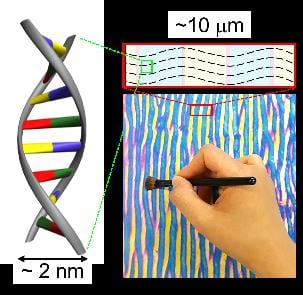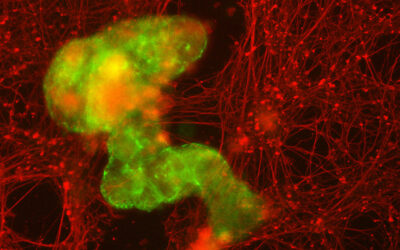A research team from KAIST, Korea has successfully fabricated nanometer scaled DNA (deoxyribonucleic acid) structures with a centimeter-scaled brush using cheap and crude DNA materials extracted from salmon sperm. In their work, regular stripes or zigzags of DNA were generated by a simple scrubbing method, keeping the total cost to prepare one-slide glass with this material under 1 USD. Even though cheap and crude DNA material was used, the dimensions achieved using this method were not different when compared with more expensive, synthetic DNA materials. Particularly, a normal makeup brush commonly available in convenience stores was employed, meaning anyone can potentially use and play with DNA to create nanostructures. Once the DNA material and makeup brush are prepared, one requires only a glass plate to draw on as wanted using the DNA material as ink. Dong Ki Yoon and coworkers aligned the DNA unidirectionally along the brushing direction achieving periodic zigzags due to the competition between DNA elasticity and the dilative force occurred during water evaporation. The resultant samples (figure) can host liquid crystal molecules due to the rich chemical properties and topography of DNA.

Brushed DNA film: polarized optical microscopy (POM) and schematic diagrams corresponding to periodically oriented DNA chains.
DNA is one of the most abundant biomaterials in nature being found in all living organisms. It has unique characteristics as its double helix with precise dimensions and its exceptionally surface dense negative charges that enable rich chemical properties. Based on these characteristics, DNA has been considered and used as building block for “origami” and textile art at the nanometer scale. However, synthesized DNA materials can be rather costly and therefore inaccessible for example in schools for educational purposes. The method here described highlights the feasibility of using DNA as an accessible and tunable template to successfully guide guest components.

















